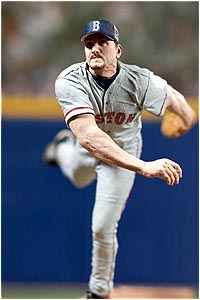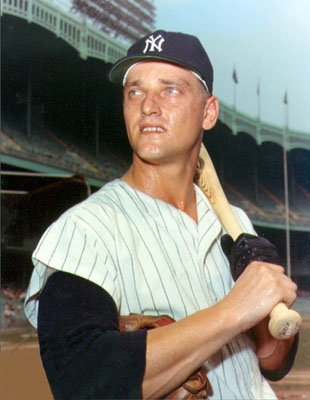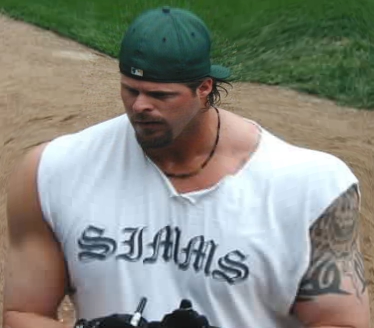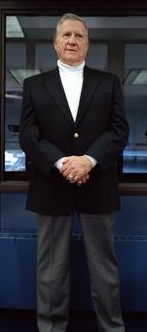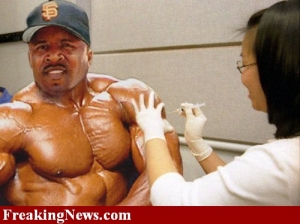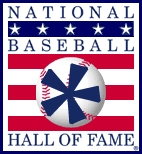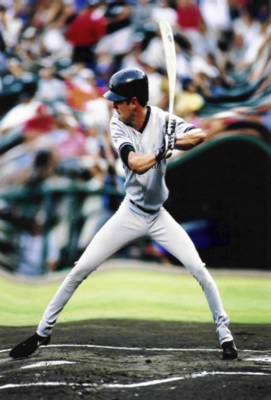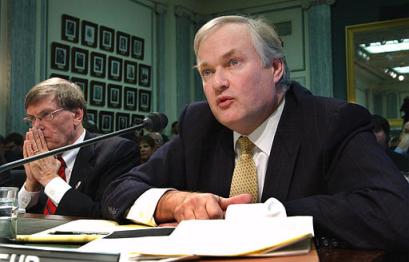In the past couple of weeks, ESPN analysts Jayson Stark and Rob Neyer have looked at the ten (allegedly) Most Improved Teams and ten Least Improved Teams, respectively. Subjective as they may be, I think that most of us would probably agree on at least seven or eight of each of these lists, if not more, so I won't argue too strenuously with either. However, it occurs to me that there remains a mid-range pack of ten teams whose offseason moves have not received the, quick, sound-bite filled, shallow and incomplete analysis they deserve. So I, your hero, am here to save the day and provide you with the almost completely useless service of examining...
The Ten (or so) Middle Static Misunderestimated Teams of 2005
Or something like that.
The ten teams that made neither Neyer's nor Stark's lists were, in no particular order:
Phillies
Dodgers
Astros
Nationals
Brewers
Orioles
Blue Jays
Twins
Indians
Cardinals
Let's take these one at a time. For the record, I didn't generally count a player if he didn't play some kind of significant role on the team in 2004. So if you're wondering why I don't mention Omar Daal or Todd Hundley after this sentence, now you know.
Philadelphia Phillies
Gained: Terry Adams, Jon Lieber, Jose Offerman, Kenny Lofton
Kept: Rheal Cormier, Cory Lidle, Placido Polanco, Todd Pratt, Amaury Telemaco, Geoff Geary
Lost: Kevin Millwood, Eric Milton, Todd Jones, Roberto Hernandez, Felix Rodriguez, Doug Glanville
I won't write too much here, because I've already written a much more detailed analysis of the Phillies, but on a cursory level, the Phils are tough to gauge. They lost some big "names" to free agency, but Millwood and Milton are both overrated, the latter having gotten a pile of money from the Reds despite never pitching a full season with an ERA under 4.32. Jones and Hernandez were going to be expensive and unnecessary, so they really didn't lose much there. Of course, Lieber and Adams don't really add a lot either, and Offerman isn't likely to play much, if at all, for the Phillies.
The really telling list for Philadelphia is that of the free agents they kept. Polanco and Cormier are both pretty good at what they do, and could have gotten more money elsewhere. Telemaco and Geary give some bullpen strength and Lidle is a solid, if unimpressive, presence in the rotation. They may get burned on the $21 million they gave Lieber, but if he's healthy, this team should compete in the NL East all season.
Los Angeles Dodgers
Gained: JD Drew, Jeff Kent, Jose Valentin, Derek Lowe, Ricky Ledee
Kept: Wilson Alvarez, Elmer Dessens, Odalis Perez
Lost: Adrian Beltre, Shawn Green, Alex Cora, Steve Finley, Jose Lima, Hideo Nomo, Scott Stewart
Lots of movement here, not a lot of improvement.
Derek Lowe certainly wasn't worth the $36 million for four years he got from LA, but Jose Lima was as good a bet to get injured or stink as he was to put up another 4.00ish ERA, so that seems like a wash. Nomo and Stewarts departures are classic "addition by subtraction." They won't be missed. Odalis Perez and Wilson Alvarez would have been, so they kept them.
Whether he matched last year's 48 homers again or not (hint: NOT), the loss of Adrian Beltre is a huge hit to this offense. Shawn Green, even though he didn't produce enough to justify being paid $17 million per season, was their second best hitter, and Finley was no slouch either. Drew more than compensates for Green, but Ledee won't ever hit like Finley did those last two months.
They also lost both halves of their 2B platoon (Cora and Hernandez), which combined for an .813 OPS in 2004, not much worse than the .836 new 2B Jeff Kent posted in road games last year. Unfortunately, Jose Valentin's 30 homers also come with his .216 average, 139 strikeouts, and 35-year old knees, so it's hard to see where they're going to get back the runs created by Green and Beltre, unless Hee Seop Choi and Jayson Werth somehow blossom given the chance to play every day. Stranger things have happened.
Houston Astros
Gained: John Franco, Orlando Palmiero, Dave Burba
Kept: Roger Clemens, Jose Vizcaino, Russ Springer
Lost: Carlos Beltran, Jeff Kent, Wade Miller, Dan Miceli, Darren Oliver
I'm not sure how the Astros didn't make Rob Neyer's list.
Beltran and Kent accounted for 50 homers, 160 RBI and 166 runs scored between them, and that for Beltran in only half a season. Who's going to compensate for that? Vizcaino? Palmiero? Rookie Chris Burke put up nice numbers in the PCL in 2004, but he won't hit like Kent did, not this year. Lance Berkman missing the first month of the season will also hurt them.
After losing three games in the postseason last year, Dan Miceli may have been run out of town if he hadn't signed with a team in Japan, but during the season he was still their most consistent setup man. Wade Miller may have been injury-prone, but he was also a solid bet to be worth more than the $1.5 million he got from Boston.
They kept Clemens and a couple other role-players. Think of Clemens' arbitration award as "back-pay" for his 2004 season, in which he only made about $5 million plus some incentives. But don't think that Clemens is going to put up another 200+ innings of sub-3.00 ERA work in 2005. This is a team destined to take a dive in '05.
Washington Nationals
Gained: Vinny Castilla, Christian Guzman, Esteban Loaiza, Antonio Osuna, Jose Guillen
Kept:
Lost: Tony Batista, Juan Rivera
The Nationals did not re-sign any of their free agents, but for once that's a good thing. Actually, they found crappy free agents elsewhere to fill out the 2005 roster, including Vinny Castilla and Christian Guzman, neither of whom should be terrible, but neither of whom is really worth the money they got either. Loaiza probably won't be as bad as he was in 2004 or as good as he was in 2003, which makes one year at $2.9 million a decent risk. Osuna's decent when healthy, the likelihood of which which is anybody's guess.
Jose Guillen was a nice pickup in a trade for Juan Rivera, capitalizing on the bad taste he left in the mouth of the Angels' front office, but he won't do enough to vault the Nats into contention, not in a division with three or four teams that could contend for the playoffs. Technically, after finishing in last place, they should have nowhere to go but up, but staying put is a more likely outcome.
Milwaukee Brewers
Gained: Carlos Lee, Ricky Botallico, Damian Miller, Tommy Phelps, Rigo Beltran
Kept: Nobody of Consequence
Lost: Craig Counsell, Scott Podsednik, Luis Vizcaino, Dan Kolb, Chad Moeller, Selig Ownership
Talk about your lackluster offseasons. The Brewers' only notable free agent acquisition was Damian Miller, to whom they inexplicably gave a three-year contract even though his knees are 35 going on mashed potatoes. Otherwise, they were very conservative this winter, which means either that
A) They realize that spending good money to keep mediocre free agents is not a winning strategy
2) They were in a holding pattern most of the offseason pending the sale of the team, or
iii) Their GM still isn't even allowed to buy a bratwurst without approval from On High.
Personally, my money's on the Patriots.
Seriously, though, the trade for Carlos Lee is a nice upgrade to the offense, as is losing Craig Counsell to the D-Backs. The bullpen's a little thinner, but relievers are so erratic anyway that the team might have two guys as good as Vizcaino and Kolb on the roster now and not know it yet. This team could surprise a lot of people and finish with a winning record, if only slightly.
Baltimore Orioles
Gained: Sammy Sosa, Steve Kline, Steve Reed, Enrique Wilson, Chris Gomez
Kept: BJ Surhoff
Lost: Jerry Hairston, Marty Cordova, Buddy Groom
The Orioles failed to lure any significant free agents this winter. For a team like Pittsburgh or Kansas City, that's not an issue, but for one of the wealthiest franchises in baseball, that's a serious problem. Sammy Sosa's presence makes an already formidable lineup (8th in MLB in 2004 with 842 Runs) even better, but the man can't pitch, and neither can much of anyone else on the roster. No team this winter did less with more, at least before last weekend.
Toronto Blue Jays
Gained: Shea Hillenbrand, Billy Koch, Corey Koskie, Scott Schoenweiss
Kept: Greg Myers, Gregg Zaun
Lost: Carlos Delgado, Chris Gomez
When the best thing you can say about your offseason is that you held onto Greg(g), The Two-Headed Catching Monster, your offseason was probably a bust. I suppose Corey Koskie isn't a bad player, but he's not Delgado either, and neither is Erik Hinske, who was slated to take over the first base job vacated when Delgado flew south for the rest of his career. Hinske's really, really not Delgado, and would be the worst regular first baseman in MLB in 2005 if the slide he's endured since his Rookie-of-the-Year 2002 season doesn't reverse itself quickly. Shea Hillenbrand, unwisely acquired by trade from the Diamondbacks, may instead be the regular 1B, with Hinske being the regular DH (emphasis not on the "H") or traded himself.
Their biggest addition to the pitching staff was Billy Koch, who started his career with Toronto, but has been with three teams the last three years. He won the Ridiculous Rolaids Relief Man Award in 2002, but has had a 5.12 ERA combined over the two seasons since, so I don't see how he helps much.
What the Blow Jays really needed was, well, everything. They were 11th in the AL in ERA in 2004, 12th in Runs Scored, 12th in home runs, 12th in batting average, 12th in OBP, 12th in slugging, 13th in steals. Their hitters were 4th in the AL in strikeouts, while their pitchers were (you guessed it) 12th. This team did nothing well on its way to 94 losses in 2004, and did very little o prevent another 90+ losses in 2005. This is another team that I think should have made Rob Neyer's "Least-Improved" list.
Minnesota Twins
Gained: Juan Castro, Eric Munson, CJ Nitkowski, Mike Redmond
Kept: Brad Radke, Terry Mulholland
Lost: Corey Koskie, Christian Guzman, Henry Blanco, Jose Offerman
The Twins expect first-round draft pick Joe Mauer to be ready to catch every day in 2005, but they signed Mike Redmond as a backup and safety net, essentially to replace Henry Blanco on the roster. He's the same age as Blanco, with comparable skills, but somehow was signed for a million dollars less than Blanco got from the Cubs, for the same 2-year deal. Go figure.
The Twins also have two good-hitting, 25-year old 3B candidates in Terry Tiffee and Michael Cuddyer, so they shouldn't miss Koskie much, especially not at an average of more than $5 million per year. Christian Guzman's at-bats will be taken by rookie Jason Bartlett, who showed the ability to hit for average and to take a walk in the minors, two skills that continually elude Guzman. He's only 24 though, so his backup is Augie Ojeda, whose main distinction in life is that he shares my birth date.
If they're smart, the Twins will trade one of their bigger name outfielders and let the younger guys play, maybe getting some help at 2B in return. This team won its division in 2004 despite finishing 10th in the AL in Runs Scored, and would do well to improve the offense however they can, because the pitching staff isn't likely to lead the league in ERA again.
The list of name changes on the Twins' roster doesn't really tell the story here. The real deal is that the Twins are virtually bursting at the seams with young hitting talent, and with Offerman, Koskie and Guzman gone, they could take some huge strides.
Cleveland Indians
Gained: Kevin Millwood, Alex Cora, Juan Gonzales, Jose Hernandez, Arthur Rhodes
Kept: Bob Wickman
Lost: Matt Lawton, Josh Phelps, Omar Vizquel, Lou Merloni, Jose Jimenez, Rick White
The Indians surprised a lot of people by contending for as long as they did in 2004. Ironically, they were in it until the weekend I visited Cleveland and watched the Twins beat them, and then went 17-27 down the stretch. If it's any consolation, I promise I won't visit Cleveland this summer.
But the Indians do not seem to be daunted by their late-season slide, but rather encouraged by how well they did perform. And so this offseason they went out and quietly made a lot of smart little moves. Everyone heard that they gave $7 million to Kevin Millwood, but it's only for one year, and if he's healthy, he'll more than earn it.
They shed some big-ticket items like Matt Lawton and Omar Vizquel, preferring instead to go with the no-frills versions (Juan Gonzales and Alex Cora) to replace them. Cora's nothing special, but he'll make a solid regular to hold down the job until Jhonny Peralta learns to spell, and to play everyday. Gonzales was signed to a minor league contract, but you have to admit he's got a lot of upside if he can stay healthy. Jose Hernandez and Arthur Rhodes are solid role players without huge price tags. Even Bob Wickman, despite his injury history, could prove to be worth the $2.7 million he'll be paid this year.
It looks to me like the Indians are planning on contending again in 2005, but know they don't have the money to go out and sign the Carlos Delgados and Beltrans of the world, so they've stacked the deck in their favor by getting several players with relatively low cost-to-upside ratios. If just a few of those pan out, they'll be in the playoff mix.
St. Louis Cardinals
Gained: Mark Mulder, Einar Diaz, David Eckstein, Mark Grudzielanek, Mike Myers
Kept: Chris Carpenter, Matt Morris, So Taguchi, Cal Eldred, John Mabry
Lost: Steve Kline, Kiki Calero, Mike Matheny, Tony Womack, Edgar Renteria, Woody Williams, Ray Lankford
There's not much of anywhere to go but down after a 105-win season and a trip to the World Series, so not surprisingly, the Cardinals probably will.
They turned over their starting double-play combo, losing Edgar Renteria to a $40 million contract with the Red Sox and Womack to the Yankees, but replaced them with Eckstein and Grudzielanek, capable if not spectacular players. They probably lose a win or two right there, but it's not as severe a dropoff as you might expect, since Womack was way over his head in 2004. They lost their starting catcher, and don't have anyone on the roster who got to the plate more than 150 times last year, so that looks like a weak spot in the lineup.
The rotation lost Woody Williams, but should be improved with the addition of Mulder, whenever he's not chasing aliens and/or government conspiracies. Steve Kline and Kiki Calero were two of their better relief pitchers, but they still have a solid bullpen, and the addition of Mike Myers gives them a situational lefty with a pretty funny Scottish accent.
Again, most of these transactions look like they'll even out, but remember that a lot of things went right for St. Louis last year. Their starting rotation was healthy all season, with a total of only eight starts doled out to someone other than the Fab Five. That almost never happens in today's game. Furthermore, their outfielders are all in their mid-30's, which also raises the possibility of injuries, and some of their role players (Womack, Mabry) hit well beyond expectations.
The Cardinals should still be in the thick of the NL Central race in 2005, but their 2004 performance was a tough act to follow. If they do suffer a severe drop in 2005 though, it will likely not be due to their offseason moves as much as the simple law of averages.
.....................
So there you have them, the Ten Kinda Sorta Not Sure What To Think Teams of the 2004-05 Offseason, AKA, The Rest of the Rest. They're the Major Majors of the baseball world, and somehow I managed to crank out over 2700 words remarking on them, the Ten Least Remarkable Teams in baseball.
God help us if I ever develop a talent anyone actually needs.

